[tm_pb_section admin_label=”section” transparent_background=”off” background_color=”#ffffff” allow_player_pause=”off” inner_shadow=”off” parallax=”off” parallax_method=”off” padding_mobile=”off” make_fullwidth=”off” use_custom_width=”off” width_unit=”on” make_equal=”off” use_custom_gutter=”off”][tm_pb_row admin_label=”Row” make_fullwidth=”off” use_custom_width=”off” use_grid_padding=”on” width_unit=”on” padding_mobile=”off” disabled=”off” disabled_on=”|off|on” allow_player_pause=”off” parallax=”off” parallax_method=”off” make_equal=”off” parallax_1=”off” parallax_method_1=”off” column_padding_mobile=”on”][tm_pb_column type=”4_4″][tm_pb_text admin_label=”Text” text_orientation=”left” text_text_color=”#dd0000″ use_border_color=”off” border_color=”#ffffff” border_style=”solid”]
<SWIPE
[/tm_pb_text][/tm_pb_column][/tm_pb_row][tm_pb_row admin_label=”row” make_fullwidth=”off” use_custom_width=”off” use_grid_padding=”on” width_unit=”on” padding_mobile=”off” background_color=”#ffffff” allow_player_pause=”off” parallax=”off” parallax_method=”off” make_equal=”on” parallax_1=”off” parallax_method_1=”off” background_color_1=”#ffffff” column_padding_mobile=”on” parallax_2=”off” parallax_method_2=”off”][tm_pb_column type=”4_4″][tm_pb_slider admin_label=”Slider” show_arrows=”on” show_pagination=”on” auto=”off” auto_ignore_hover=”on” parallax=”off” parallax_method=”off” remove_inner_shadow=”off” background_position=”default” background_size=”default” hide_content_on_mobile=”off” hide_cta_on_mobile=”off” show_image_video_mobile=”off” custom_button=”off” button_letter_spacing=”0″ button_use_icon=”default” button_icon_placement=”right” button_on_hover=”on” button_letter_spacing_hover=”0″ header_text_color=”#dd0d0d” header_font_size=”25″ body_text_color=”#dd0000″ body_font_size=”10″]
[tm_pb_slide heading=”Fire Basics” background_position=”default” background_size=”default” background_color=”#ffffff” use_bg_overlay=”off” use_text_overlay=”off” alignment=”center” allow_player_pause=”off” text_border_radius=”3″ header_font_select=”default” header_font=”||||” body_font_select=”default” body_font=”||||” custom_button=”off” button_font_select=”default” button_font=”||||” button_use_icon=”default” button_icon_placement=”right” button_on_hover=”on” header_font_size=”20″ header_font_size_tablet=”30″ header_font_size_phone=”30″ body_text_color=”#dd3333″ body_font_size=”16″ body_font_size_tablet=”16″ body_font_size_phone=”16″]

Before we identify the types of fire extinguishers,
We need to learn a little about how fire works.
[/tm_pb_slide][tm_pb_slide heading=”Fire Basics” background_position=”default” background_size=”default” background_color=”#ffffff” use_bg_overlay=”off” use_text_overlay=”off” alignment=”center” allow_player_pause=”off” text_border_radius=”3″ header_font_select=”default” header_font=”||||” body_font_select=”default” body_font=”||||” custom_button=”off” button_font_select=”default” button_font=”||||” button_use_icon=”default” button_icon_placement=”right” button_on_hover=”on” body_font_size=”16″ body_font_size_tablet=”16″ body_font_size_phone=”16″]

A fire starts when all of the following occurs simultaneously:
There is a fuel or a combustible material
Enough heat to raise the temperature of the material to its ignition point
Sufficient amount of oxygen to support combustion
A Chemical reaction
[/tm_pb_slide][tm_pb_slide heading=”Types of Fire” background_position=”default” background_size=”default” background_color=”#ffffff” use_bg_overlay=”off” use_text_overlay=”off” alignment=”center” allow_player_pause=”off” text_border_radius=”3″ header_font_select=”default” header_font=”||||” body_font_select=”default” body_font=”||||” custom_button=”off” button_font_select=”default” button_font=”||||” button_use_icon=”default” button_icon_placement=”right” button_on_hover=”on” header_font_size=”20″ header_font_size_tablet=”30″ header_font_size_phone=”30″ body_text_color=”#dd3333″ body_font_size=”14″ body_font_size_tablet=”14″ body_font_size_phone=”14″]
The type of fire that is produced depends on which materials are involved
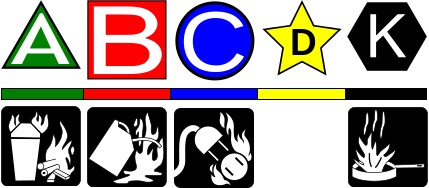
[/tm_pb_slide][tm_pb_slide heading=”Types of Fire: Class A” background_position=”default” background_size=”default” background_color=”#ffffff” use_bg_overlay=”off” use_text_overlay=”off” alignment=”center” allow_player_pause=”off” text_border_radius=”3″ header_font_select=”default” header_font=”||||” body_font_select=”default” body_font=”||||” custom_button=”off” button_font_select=”default” button_font=”||||” button_use_icon=”default” button_icon_placement=”right” button_on_hover=”on” header_font_size=”20″ header_font_size_tablet=”30″ header_font_size_phone=”30″ body_text_color=”#dd3333″ body_font_size=”16″ body_font_size_tablet=”16″ body_font_size_phone=”16″]

Ordinary Combustibles
paper, cloth, wood, rubber, and many plastics
[/tm_pb_slide][tm_pb_slide heading=”Types of Fire: Class B” background_position=”default” background_size=”default” background_color=”#ffffff” use_bg_overlay=”off” use_text_overlay=”off” alignment=”center” allow_player_pause=”off” text_border_radius=”3″ header_font_select=”default” header_font=”||||” body_font_select=”default” body_font=”||||” custom_button=”off” button_font_select=”default” button_font=”||||” button_use_icon=”default” button_icon_placement=”right” button_on_hover=”on” header_font_size=”20″ header_font_size_tablet=”20″ header_font_size_phone=”20″ body_font_size=”16″ body_font_size_tablet=”16″ body_font_size_phone=”16″]
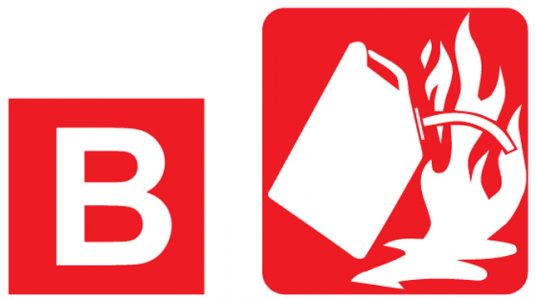
Flammable Liquids
Fires in oils, gasoline, some paints, lacquers, grease, solvents, and other flammable liquids
[/tm_pb_slide][tm_pb_slide heading=”Types of Fire: Class C” background_position=”default” background_size=”default” background_color=”#ffffff” use_bg_overlay=”off” use_text_overlay=”off” alignment=”center” allow_player_pause=”off” text_border_radius=”3″ header_font_select=”default” header_font=”||||” body_font_select=”default” body_font=”||||” custom_button=”off” button_font_select=”default” button_font=”||||” button_use_icon=”default” button_icon_placement=”right” button_on_hover=”on” header_font_size=”20″ header_font_size_tablet=”20″ header_font_size_phone=”20″ body_font_size=”16″ body_font_size_tablet=”16″ body_font_size_phone=”16″]

Electrical Equipment
wiring, fuse boxes, energized electrical equipment, computers, and other electrical sources
[/tm_pb_slide][tm_pb_slide heading=”Types of Fire: Class D” background_position=”default” background_size=”default” background_color=”#ffffff” use_bg_overlay=”off” use_text_overlay=”off” alignment=”center” allow_player_pause=”off” text_border_radius=”3″ header_font_select=”default” header_font=”||||” body_font_select=”default” body_font=”||||” custom_button=”off” button_font_select=”default” button_font=”||||” button_use_icon=”default” button_icon_placement=”right” button_on_hover=”on” header_font_size=”20″ header_font_size_tablet=”20″ header_font_size_phone=”20″ body_font_size=”16″ body_font_size_tablet=”16″ body_font_size_phone=”16″]


Metals
powders, flakes or shavings of combustible metals such as magnesium, titanium, potassium, and sodium
[/tm_pb_slide][tm_pb_slide heading=”Types of Fire: Class K” background_position=”default” background_size=”default” background_color=”#ffffff” use_bg_overlay=”off” use_text_overlay=”off” alignment=”center” allow_player_pause=”off” text_border_radius=”3″ header_font_select=”default” header_font=”||||” body_font_select=”default” body_font=”||||” custom_button=”off” button_font_select=”default” button_font=”||||” button_use_icon=”default” button_icon_placement=”right” button_on_hover=”on” header_font_size=”20″ header_font_size_tablet=”20″ header_font_size_phone=”20″ body_font_size=”16″ body_font_size_tablet=”16″ body_font_size_phone=”16″]


Kitchen Fires
combustible cooking fluids such as oils and fats
[/tm_pb_slide][tm_pb_slide heading=”Types of Fire Extinguishers” background_position=”default” background_size=”default” background_color=”#ffffff” use_bg_overlay=”off” use_text_overlay=”off” alignment=”center” allow_player_pause=”off” text_border_radius=”3″ header_font_select=”default” header_font=”||||” body_font_select=”default” body_font=”||||” custom_button=”off” button_font_select=”default” button_font=”||||” button_use_icon=”default” button_icon_placement=”right” button_on_hover=”on” header_font_size=”20″ header_font_size_tablet=”20″ header_font_size_phone=”20″ body_font_size=”16″ body_font_size_tablet=”16″ body_font_size_phone=”16″]
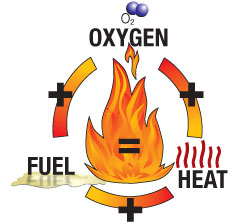
Fire Extinguishers are designed to remove one of the three elements that produce a fire
The Label On Each Fire Extinguisher
Indicates Which Type of Fire It Is Designed To Extinguish
[/tm_pb_slide][tm_pb_slide heading=”Types of Fire Extinguishers: Water” background_position=”default” background_size=”default” background_color=”#ffffff” use_bg_overlay=”off” use_text_overlay=”off” alignment=”center” allow_player_pause=”off” text_border_radius=”3″ header_font_select=”default” header_font=”||||” body_font_select=”default” body_font=”||||” custom_button=”off” button_font_select=”default” button_font=”||||” button_use_icon=”default” button_icon_placement=”right” button_on_hover=”on” header_font_size=”20″ header_font_size_tablet=”20″ header_font_size_phone=”20″ body_font_size=”16″ body_font_size_tablet=”16″ body_font_size_phone=”16″]
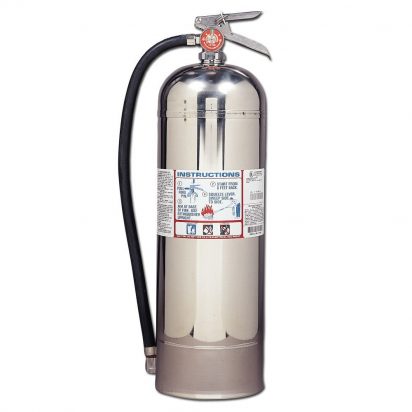
[/tm_pb_slide][tm_pb_slide heading=”Types Of Fire Extinguishers: Water” background_position=”default” background_size=”default” background_color=”#ffffff” use_bg_overlay=”off” use_text_overlay=”off” alignment=”center” allow_player_pause=”off” text_border_radius=”3″ header_font_select=”default” header_font=”||||” body_font_select=”default” body_font=”||||” custom_button=”off” button_font_select=”default” button_font=”||||” button_use_icon=”default” button_icon_placement=”right” button_on_hover=”on” header_font_size=”15″ header_font_size_tablet=”20″ header_font_size_phone=”20″ body_font_size=”16″ body_font_size_tablet=”16″ body_font_size_phone=”16″]
Water Extinguishers

Class A (wood, paper, cloth, rubber, and certain plastics) fires only.
Removes the heat element of the fire triangle.
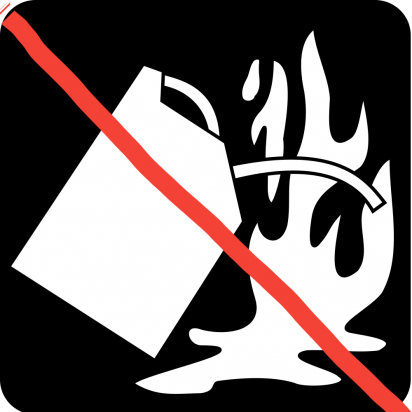

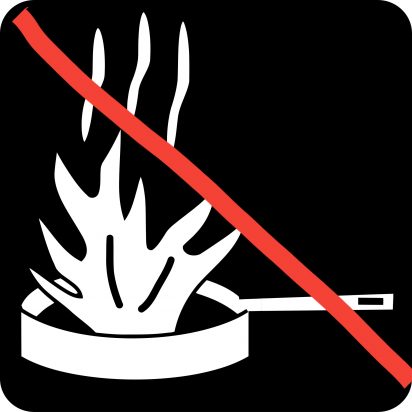
Don’t use water on flammable liquid or cooking oil fires. Doesn’t Work. There is a big risk of spreading the fire.
Don’t use water on an electrical fire. May cause electrocution if electrical devices are plugged.
[/tm_pb_slide][tm_pb_slide heading=”Types of Fire Extinguishers: Carbon Dioxide ” background_position=”default” background_size=”default” background_color=”#ffffff” use_bg_overlay=”off” use_text_overlay=”off” alignment=”center” allow_player_pause=”off” text_border_radius=”3″ header_font_select=”default” header_font=”||||” body_font_select=”default” body_font=”||||” custom_button=”off” button_font_select=”default” button_font=”||||” button_use_icon=”default” button_icon_placement=”right” button_on_hover=”on” header_font_size=”20″ header_font_size_tablet=”20″ header_font_size_phone=”20″ body_font_size=”16″ body_font_size_tablet=”16″ body_font_size_phone=”16″]
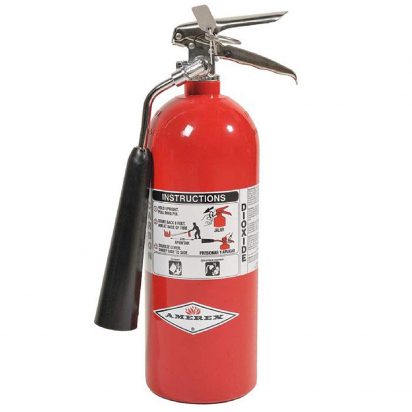
[/tm_pb_slide][tm_pb_slide heading=”Types Of Fire Extinguishers: Carbon Dioxide” background_position=”default” background_size=”default” background_color=”#ffffff” use_bg_overlay=”off” use_text_overlay=”off” alignment=”center” allow_player_pause=”off” text_border_radius=”3″ header_font_select=”default” header_font=”||||” body_font_select=”default” body_font=”||||” custom_button=”off” button_font_select=”default” button_font=”||||” button_use_icon=”default” button_icon_placement=”right” button_on_hover=”on” header_font_size=”15″ header_font_size_tablet=”20″ header_font_size_phone=”20″ body_font_size=”16″ body_font_size_tablet=”16″ body_font_size_phone=”16″]
CO2 Extinguishers


Class B and C (flammable liquid and electrical) fires only.
Takes away the oxygen element of the fire triangle.
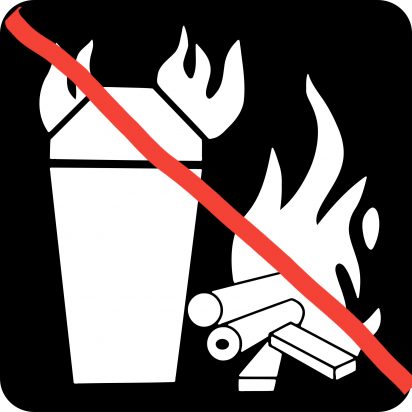
CO2is not effective for Class A fires because they may re-ignite after the CO2 fades.
[/tm_pb_slide][tm_pb_slide heading=”Types of Fire Extinguishers: Dry Chemical” background_position=”default” background_size=”default” background_color=”#ffffff” use_bg_overlay=”off” use_text_overlay=”off” alignment=”center” allow_player_pause=”off” text_border_radius=”3″ header_font_select=”default” header_font=”||||” body_font_select=”default” body_font=”||||” custom_button=”off” button_font_select=”default” button_font=”||||” button_use_icon=”default” button_icon_placement=”right” button_on_hover=”on” header_font_size=”20″ header_font_size_tablet=”20″ header_font_size_phone=”20″ body_font_size=”16″ body_font_size_tablet=”16″ body_font_size_phone=”16″]
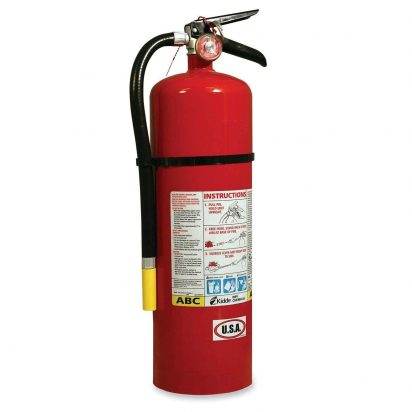
[/tm_pb_slide][tm_pb_slide heading=”Types Of Fire Extinguishers: Dry Chemical” background_position=”default” background_size=”default” background_color=”#ffffff” use_bg_overlay=”off” use_text_overlay=”off” alignment=”center” allow_player_pause=”off” text_border_radius=”3″ header_font_select=”default” header_font=”||||” body_font_select=”default” body_font=”||||” custom_button=”off” button_font_select=”default” button_font=”||||” button_use_icon=”default” button_icon_placement=”right” button_on_hover=”on” header_font_size=”15″ header_font_size_tablet=”20″ header_font_size_phone=”20″ body_font_size=”16″ body_font_size_tablet=”16″ body_font_size_phone=”16″]
Dry Chemical Extinguishers



Primarily designed for B and C fires.
May be used on Class A, B, and/or C fires. Ensure label indicates this
Interrupts chemical reaction of the fire triangle.
Coats the fuel with a thin layer of powder which separates the fuel from the oxygen.
[/tm_pb_slide][tm_pb_slide heading=”Types of Fire Extinguishers: Dry Powder” background_position=”default” background_size=”default” background_color=”#ffffff” use_bg_overlay=”off” use_text_overlay=”off” alignment=”center” allow_player_pause=”off” text_border_radius=”3″ header_font_select=”default” header_font=”||||” body_font_select=”default” body_font=”||||” custom_button=”off” button_font_select=”default” button_font=”||||” button_use_icon=”default” button_icon_placement=”right” button_on_hover=”on” header_font_size=”20″ header_font_size_tablet=”20″ header_font_size_phone=”20″ body_font_size=”16″ body_font_size_tablet=”16″ body_font_size_phone=”16″]
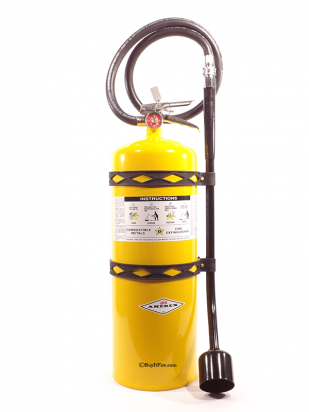
[/tm_pb_slide][tm_pb_slide heading=”Types Of Fire Extinguishers: Dry Powder” background_position=”default” background_size=”default” background_color=”#ffffff” use_bg_overlay=”off” use_text_overlay=”off” alignment=”center” allow_player_pause=”off” text_border_radius=”3″ header_font_select=”default” header_font=”||||” body_font_select=”default” body_font=”||||” custom_button=”off” button_font_select=”default” button_font=”||||” button_use_icon=”default” button_icon_placement=”right” button_on_hover=”on” header_font_size=”15″ header_font_size_tablet=”20″ header_font_size_phone=”20″ body_font_size=”16″ body_font_size_tablet=”16″ body_font_size_phone=”16″]
Dry Powder Extinguishers


Class D (metals) fires.
Separates the fuel element from the oxygen element of the fire triangle.
May not effective for Class A fires because they may re-ignite after the powder fades.
[/tm_pb_slide][tm_pb_slide heading=”Types of Fire Extinguishers: Wet/Dry Chemical for Kitchen” background_position=”default” background_size=”default” background_color=”#ffffff” use_bg_overlay=”off” use_text_overlay=”off” alignment=”center” allow_player_pause=”off” text_border_radius=”3″ header_font_select=”default” header_font=”||||” body_font_select=”default” body_font=”||||” custom_button=”off” button_font_select=”default” button_font=”||||” button_use_icon=”default” button_icon_placement=”right” button_on_hover=”on” header_font_size=”20″ header_font_size_tablet=”20″ header_font_size_phone=”20″ body_font_size=”16″ body_font_size_tablet=”16″ body_font_size_phone=”16″]
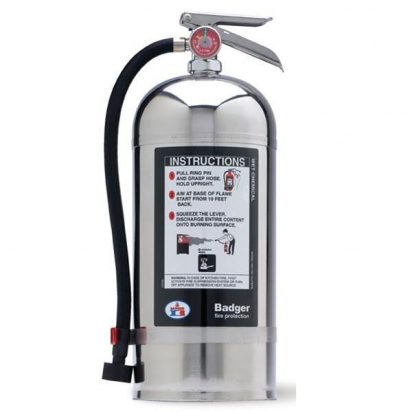
[/tm_pb_slide][tm_pb_slide heading=”Types Of Fire Extinguishers: Wet/Dry Chemical for Kitchen” background_position=”default” background_size=”default” background_color=”#ffffff” use_bg_overlay=”off” use_text_overlay=”off” alignment=”center” allow_player_pause=”off” text_border_radius=”3″ header_font_select=”default” header_font=”||||” body_font_select=”default” body_font=”||||” custom_button=”off” button_font_select=”default” button_font=”||||” button_use_icon=”default” button_icon_placement=”right” button_on_hover=”on” header_font_size=”15″ header_font_size_tablet=”20″ header_font_size_phone=”20″ body_font_size=”16″ body_font_size_tablet=”16″ body_font_size_phone=”16″]
Wet/Dry Chemical Kitchen Extinguishers


Class K (oils and fats) fires.
Only required for commercial cooking system hood and fire suppression system
Separates the fuel element from the oxygen element of the fire triangle.
[/tm_pb_slide]
[/tm_pb_slider][/tm_pb_column][/tm_pb_row][/tm_pb_section]